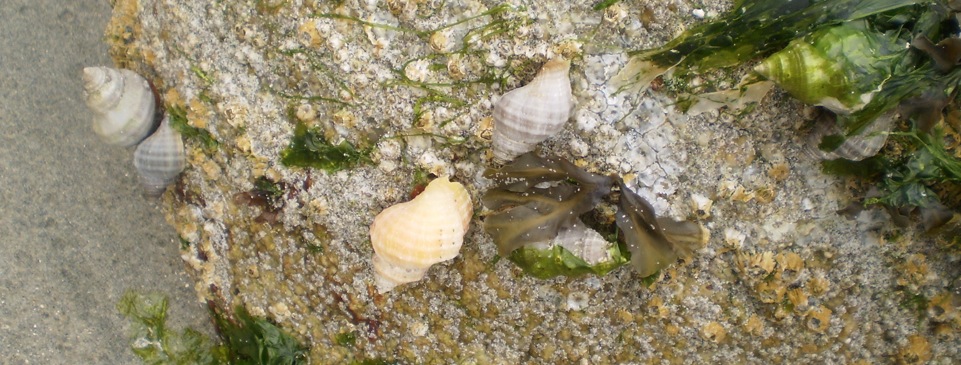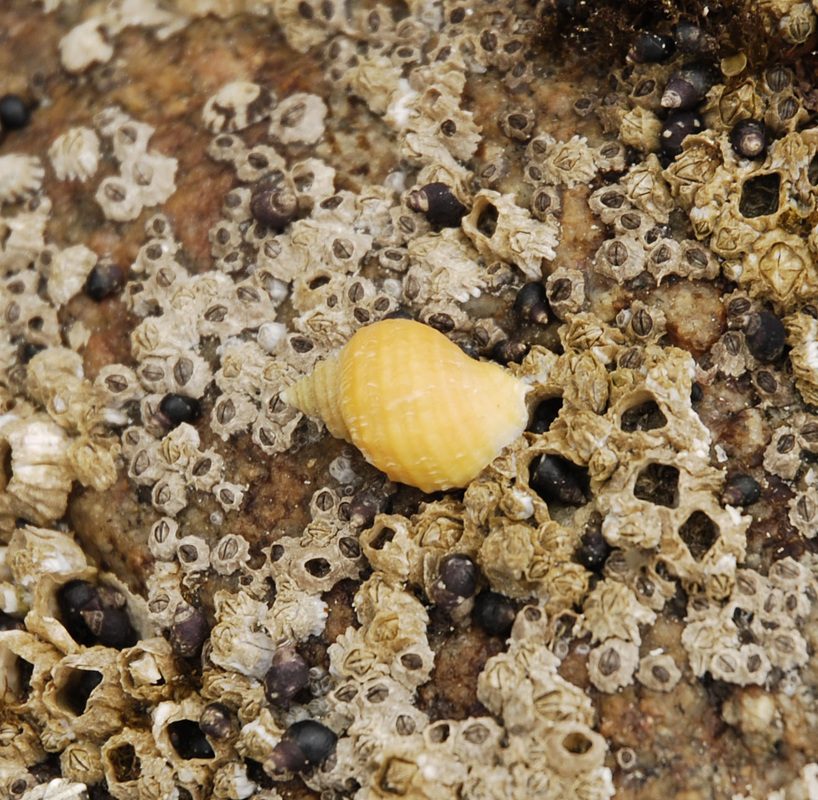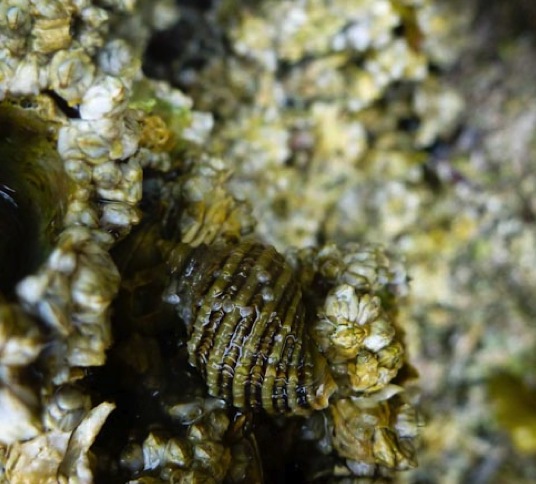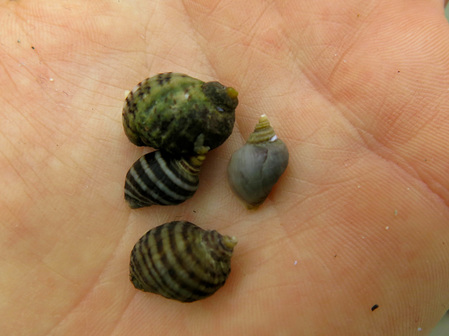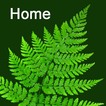Northern striped dogwinkle • Nucella ostrina, formerly Nucella emarginata
Identification
This marine snail reaches a maximum size of 3 cm long. It has a wide shell composed of 3 indistinct whorls and marked with alternating thick and thin spiral ridges. The ridges are usually lighter in colour while the grooves in between are darker. The depth of these ridges and grooves varies, apparently with exposure; snails in more exposed locations can be nearly smooth, with alternating thick and thin light-coloured bands instead of ridges. The width of the shell's operculum (opening) is less than half the diameter of shell (click here for a diagram general sea snail shell characteristics). The northern striped dogwinkle's exterior shell colour ranges from gray, black, brown, or orange, with a purple interior.
Habitat & Range
Look for this dogwinkle along semi- and fully exposed rocky shores at higher intertidal heights. This species is found from the Bering Sea to Point Conception, California.
Similar Species
At least five Nucella species are found in British Columbia, and taxonomy seems unsettled. The northern striped dogwinkle’s main distinguishing features appear to be the alternative thick and thin grooves/bands and indistinct whorl. In contrast, the northern channeled dogwinkle (Nucella canaliculata) (and the proposed northern lined dogwinkle, N. analoga) is more slender with distinct whorls, with deeper and more even-sized ridges and grooves. The file dogwinkle (N. lima) is also thinner, has more and narrower spiral ribs, and may have small axial ridges or frills running along its length, crossing the spiral ridges. The frilled dogwinkle (N. lamellosa) also has these axial ridges, to varying degrees.
Intriguing Info
The northern striped dogwinkle preys on barnacles, and is often found in the high intertidal near its major food source. The snail first drills a hole into its prey’s shell using its radula (mouthpart) and then uses its long proboscis to suck out the flesh.
This marine snail reaches a maximum size of 3 cm long. It has a wide shell composed of 3 indistinct whorls and marked with alternating thick and thin spiral ridges. The ridges are usually lighter in colour while the grooves in between are darker. The depth of these ridges and grooves varies, apparently with exposure; snails in more exposed locations can be nearly smooth, with alternating thick and thin light-coloured bands instead of ridges. The width of the shell's operculum (opening) is less than half the diameter of shell (click here for a diagram general sea snail shell characteristics). The northern striped dogwinkle's exterior shell colour ranges from gray, black, brown, or orange, with a purple interior.
Habitat & Range
Look for this dogwinkle along semi- and fully exposed rocky shores at higher intertidal heights. This species is found from the Bering Sea to Point Conception, California.
Similar Species
At least five Nucella species are found in British Columbia, and taxonomy seems unsettled. The northern striped dogwinkle’s main distinguishing features appear to be the alternative thick and thin grooves/bands and indistinct whorl. In contrast, the northern channeled dogwinkle (Nucella canaliculata) (and the proposed northern lined dogwinkle, N. analoga) is more slender with distinct whorls, with deeper and more even-sized ridges and grooves. The file dogwinkle (N. lima) is also thinner, has more and narrower spiral ribs, and may have small axial ridges or frills running along its length, crossing the spiral ridges. The frilled dogwinkle (N. lamellosa) also has these axial ridges, to varying degrees.
Intriguing Info
The northern striped dogwinkle preys on barnacles, and is often found in the high intertidal near its major food source. The snail first drills a hole into its prey’s shell using its radula (mouthpart) and then uses its long proboscis to suck out the flesh.
References
Harbo, R. 2011. Whelks to Whales: Coastal marine life of the Pacific Northwest. Madeira Park, BC: Harbour Publishing. P. 144-146.
Harbo, R. (1997). Shells and Shellfish of the Pacific Northwest. Madeira Park, BC: Harbour Publishing. P. 212.
Nucella ostrina (Gould, 1852). In Klinkenberg, Brian. (Editor) 2012. E-Fauna BC: Electronic Atlas of the Fauna of British Columbia [efauna.bc.ca]. Lab for Advanced Spatial Analysis, Department of Geography, University of British Columbia, Vancouver. Accessed 6/26/2014.
Authors and editors of page
Christina Meschkat, Kelly Fretwell, and Brian Starzomski (2014).
Harbo, R. 2011. Whelks to Whales: Coastal marine life of the Pacific Northwest. Madeira Park, BC: Harbour Publishing. P. 144-146.
Harbo, R. (1997). Shells and Shellfish of the Pacific Northwest. Madeira Park, BC: Harbour Publishing. P. 212.
Nucella ostrina (Gould, 1852). In Klinkenberg, Brian. (Editor) 2012. E-Fauna BC: Electronic Atlas of the Fauna of British Columbia [efauna.bc.ca]. Lab for Advanced Spatial Analysis, Department of Geography, University of British Columbia, Vancouver. Accessed 6/26/2014.
Authors and editors of page
Christina Meschkat, Kelly Fretwell, and Brian Starzomski (2014).
